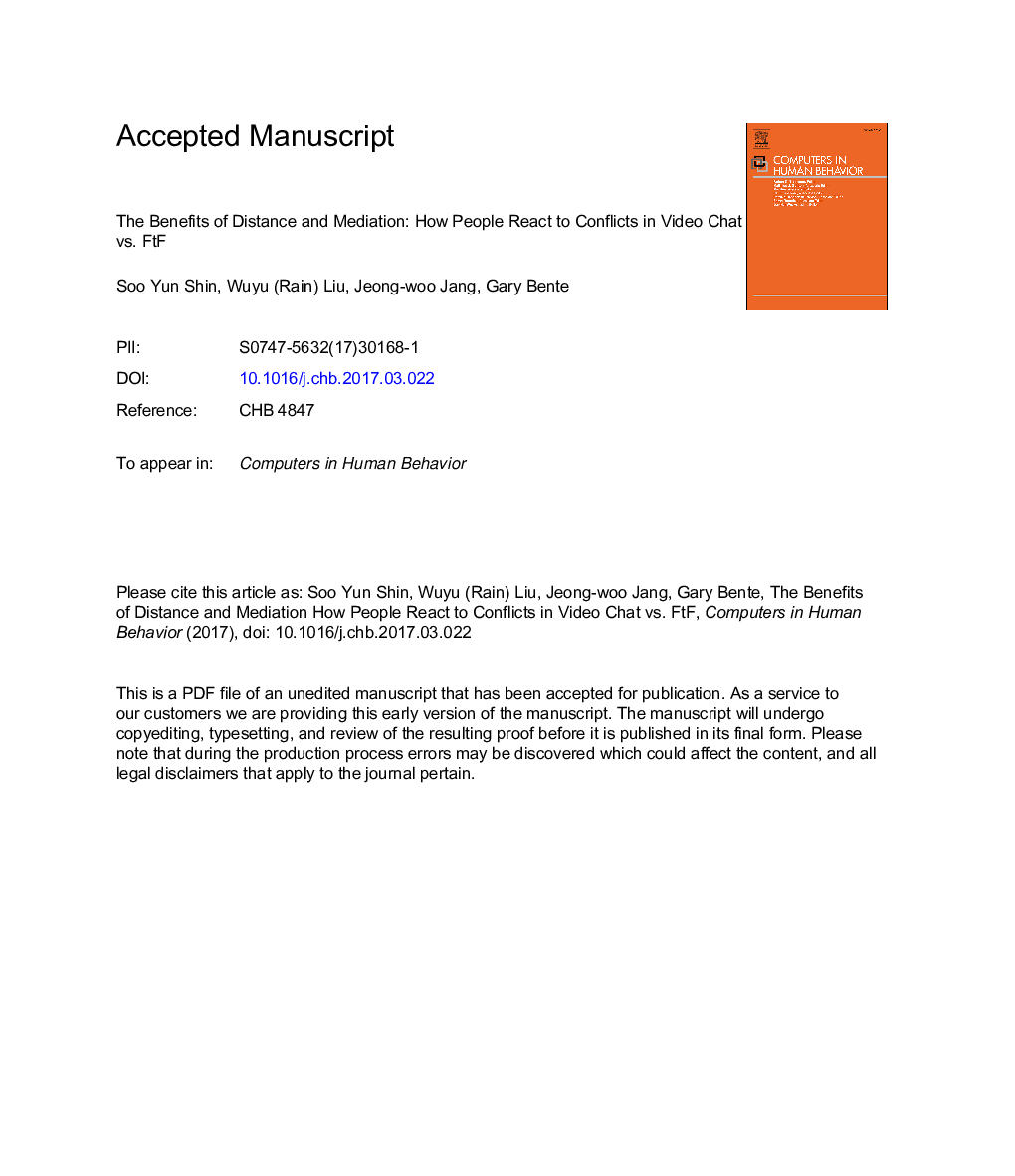| Article ID | Journal | Published Year | Pages | File Type |
|---|---|---|---|---|
| 4937152 | Computers in Human Behavior | 2017 | 38 Pages |
Abstract
Conflicts come as natural elements in human relationships and they are experienced in face-to-face as well as mediated interactions. Yet, it is unclear in which way and to which degree the modality of interaction influences the experience, the process, and the outcome of conflict communication. Comparing face-to-face and video chat encounters, the current experiment examined whether different communication modalities (video chat: mediated-distal vs. face-to-face: non-mediated-proximal) affect emotional arousal, partner evaluation, and communication satisfaction in conflict-laden interactions. Arousal was measured via self-report as well as physiological measures (interbeat interval, galvanic skin response). Results show that people who interacted via video chat reported less arousal than those who interacted face-to-face although there was no significant difference in physiological arousal measures. Also, those who interacted via video chat rated their partner and their conversation more positively. The findings suggest that, although some nonverbal signals were conveyed in both settings, the lack of mere physical co-presence in mediated encounters might be beneficial for conflict resolution.
Related Topics
Physical Sciences and Engineering
Computer Science
Computer Science Applications
Authors
Soo Yun Shin, Wuyu (Rain) Liu, Jeong-woo Jang, Gary Bente,
